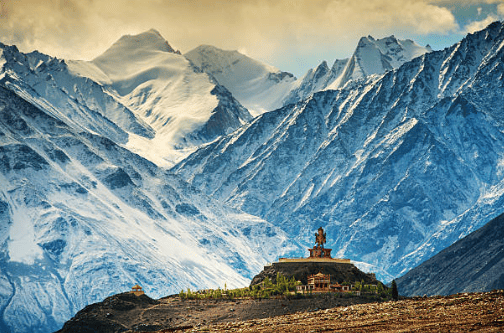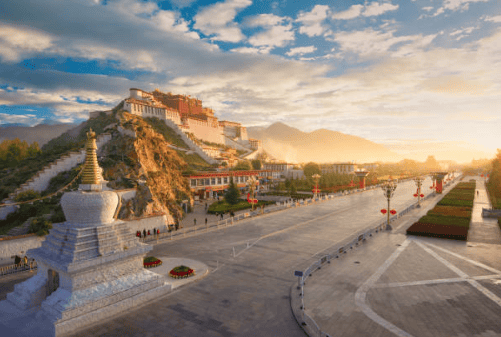After enduring an extremely cold and seemingly endless night in a tent at Everest Base Camp, the sun finally began to rise around 8 a.m. After breakfast, on this morning of October 20, 2023, we headed to the monastery and the highest post office in the world to enjoy the views and take photos while waiting for our bus. The morning was still bitterly cold, with a temperature around -10 degrees Celsius.
Around 10 a.m., our bus arrived, and we left EBC, heading toward Gyatso La Pass at an elevation of 5,220 meters. From here, we could see the magnificent view of the Himalayan mountains. Our long journey to Shigatse was punctuated by a lunch break. In the afternoon, we arrived in Shigatse, Tibet’s second-largest city, where we rested and soaked in the peaceful city atmosphere.

That evening, we had dinner at a traditional restaurant that was more like a large theater, showcasing Tibetan dance and music. The menu included a type of steamboat with a refreshing broth. The restaurant’s interior was quite antique, with red and gold carved wooden tables.
On the morning of October 21, we left Shigatse to visit Tashilhunpo Monastery. Tashilhunpo is one of the most important monasteries in Tibetan Buddhism. Founded in 1447 by the first Dalai Lama, this monastery is the traditional seat of the Panchen Lama, the second-highest figure in the Gelug tradition of Tibetan Buddhism. The monastery’s name, Tashilhunpo, means “all fortune and happiness gathered here” or “heap of glory.” The monastery is renowned for its impressive architecture, including the Maitreya Chapel, which houses a massive Maitreya Buddha statue, and the Panchen Lamas’ tombs. Although it suffered significant damage during the Cultural Revolution, many buildings have been restored, and the monastery remains a vital center for Buddhist learning and pilgrimage.

We then continued to the Yampachen Grassland, which, in summer, offers expansive grasslands and natural hot springs. However, in late October, the grasslands were covered in thick snow as far as the eye could see, making it a delightful spot for playing in the snow.
Our journey for the day ended in the late afternoon in Damxung, a small and quiet town near Namtso Lake. The hotel where we stayed was unique; unlike previous hotels with portable oxygen regulators, this one was equipped with built-in wall-mounted oxygen regulators. Guests could buy individual oxygen tubes from the reception if needed. This feature was especially helpful for guests who might experience oxygen deficiency due to the altitude.
On our seventh day in Tibet, October 22, after breakfast at the hotel, we continued our journey to Namtso Lake, one of Tibet’s sacred lakes. The lake is known for its clear blue waters and the stunning mountains surrounding it. Visitors are not allowed to swim or touch the water, as it is considered sacred by the Tibetan people.
After enjoying the beauty of Namtso Lake, we continued our journey back to Lhasa, the capital of Tibet. Before entering Lhasa, we stopped at a jewelry store selling Tibetan jade and beads, believed by many to bring good fortune to those who wear them. We spent our last night in Tibet shopping for souvenirs and gifts at a department store near the hotel.

On the morning of October 23, we revisited the Potala Palace area, but this time from a viewing point in the city center, where there is a spot to view the palace, which appears on the 50-renminbi Chinese banknote. In the afternoon, we headed to Lhasa Airport to fly back to Chongqing. We arrived in Chongqing in the evening and stayed again at the Orange Hotel. This was my and Rizki’s last night in Chongqing, and we made the most of it by enjoying a Chongqing hotpot dinner.
The rest of the group would stay in Chongqing until October 26, but Rizki and I needed to return to Jakarta on October 24, as Dani had to attend his graduation and physician’s oath ceremony in Jakarta on October 25.
